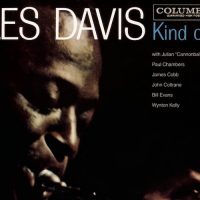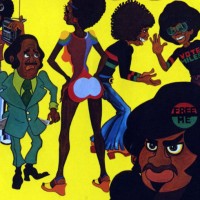Released on July 30, 1969, In a Silent Way was the demarcation line between the straight acoustic jazz Miles Davis had played up to that time and the electric jazz-rock fusion that the innovative trumpeter turned to almost exclusively to the time of his death in 1991.
This critically important turning point is best explored on The Complete ‘In a Silent Way’ Sessions (1968-69), a three-disc set issued by Columbia in 2001 and then again three years later. Not every box set containing a bunch of 18-minute long outtakes is worth the $40-$50 asking price – but this one is.
The tracks represent his entire recorded output in chronological order from September 1968 until February 1969. Miles Davis was on a major creative roll. He had seen his former protege’ Cannonball Adderley become increasingly popular during the ’60s, as Adderley blended R&B into his jazz. Davis wanted to reach a larger audience too, but instead of looking to Ray Charles for inspiration, he used the music of Jimi Hendrix and Sly Stone for his own template.
The Complete ‘In a Silent Way’ Sessions (1968-69) gets started with a couple of recordings from the transitional Filles Des Kiliminjaro, where the electric piano is used in place of acoustic – but otherwise the material still sounds much like his prior work. Then there are tracks that never made it into any proper album and a few that were previously unreleased altogether. Following those are the actual initial recordings for In a Silent Way and then the finished recordings of the album.
We find Miles Davis starting out still solidly on the jazz side before moving well into the rock side and then finally settling on the perfect blend of the two. It’s like being present in a mad scientist’s laboratory as he cooks up a mind-boggling invention. But there is absolutely no fluff, no filler, not even among the rejected tracks.
It was also during this time frame that Davis brought in Joe Zawinul from Adderley’s band and a little-known studio guitarist from England named John McLaughlin. Both helped to bring about an immediate change in Davis’ sound and move him along in the direction he was wanting to go.
Zawinul, of course, ended up composing the beautiful title track for In a Silent Way. But what we learn from these complete recordings is that the song was originally recorded utilizing a more conventional arrangement, with a light Brazilian feel to it. The final version removes the rhythm altogether, letting the piece float freely, suspended from timekeeping. This gave the song an entirely different vibe, one that emphasized mood and texture over melody and improvisation.
While the previous version was fine, the one that made the final cut made “In a Silent Way” unforgettable. True genius. We also learn that the other track on the finished album, “Shhh/Peaceful,” had a previously unknown bridge that was eventually edited out. The effect of this edit was to give the tune a darker overtone. To compensate for the loss in length after taking out the bridge, producer Teo Macero just looped the remainder of the recording, giving “Shhh/Peaceful” its hypnotic effect.
Elsewhere, The Complete ‘In a Silent Way’ Sessions (1968-69) offers still more opportunities to listen to these pieces develop gradually. At times, it takes a while to wrap you mind around them – but your patient listening is rewarded in spades.
Beginning with disc one, “Mademoiselle Mabry” and “Frelon Brown” are the two last tracks recorded for the aforementioned Filles de Kilimanjaro. They have a vague soul feel to them but are still solidly in the jazz camp. “Two Faced” is a free-floating song like “Mademoiselle Mabry” but better realized.
“Dual Mr. Anthony Tillmon Williams Process” abandons jazz almost entirely in favor of a twist-like groove, as the song’s namesake seems to relish the chance to delve into pop rhythms while the two keyboardists Herbie Hancock and Chick Corea and acoustic bassist Dave Holland cut loose with some funky vamps. This tune and “Two Faced” marked the first times where Miles Davis used multiple keyboardists, a configuration that played a major part in shaping his distinctive heavy sound of In A Silent Way and Bitches Brew.
“Splash” consolidates ideas presented in the prior two songs, while “Splashdown” introduces Zawinul and a three keyboard lineup. “Ascent,” which begins disc two, is where Joe Zawinul begins to have a real impact on the proceedings, because it’s the first composition he contributed. Note Brian Eno fans: this is lovely piece is perhaps the first modern ambient song ever recorded.
The next Zawinul composition on The Complete ‘In a Silent Way’ Sessions (1968-69), “Directions” (I and II),” is another milestone. It’s here where Davis replaces Williams with another great drummer, Jack DeJohnette, and his first assignment is to propel “Directions” with an urgent, hard-rocking rhythm. The song also has a recognizable theme that provides a touchstone between extended solos, becoming part of the Davis concert canon for years to come.
The remainder of disc two are unedited/rehearsal versions of the songs that ended up on the final product. These February 1969 sessions usher in the John McLaughlin era. For the first time, Miles Davis found a guitarist who fit his vision of playing the instrument without any preconceptions. It’s also here that we finally get to hear the “clutter” of chords that Davis removed to leave us with the sparse structure of the release versions.
While Davis achieved his aim of starkly beautiful music, what was left on Macero’s cutting room floor remains far more interesting than much of all the other experimental music being created at that time – largely because it sounds suspended from time.
Lastly, the officially released version of In a Silent Way makes up the third disc. Taken together, these recordings offer an intriguing glimpse into the musical mind of Miles Davis. The changing cast of musicians were all among the best in the business at the time, and do a great job in making the old master’s vision a reality. Just about everything that Davis recorded after In a Silent Way was rooted in the sounds produced over these four months in the studio. For that matter, so is just about all of fusion from everybody else.





Pingback: Danny Kortchmar, legendary guitarist: Something Else! Interview